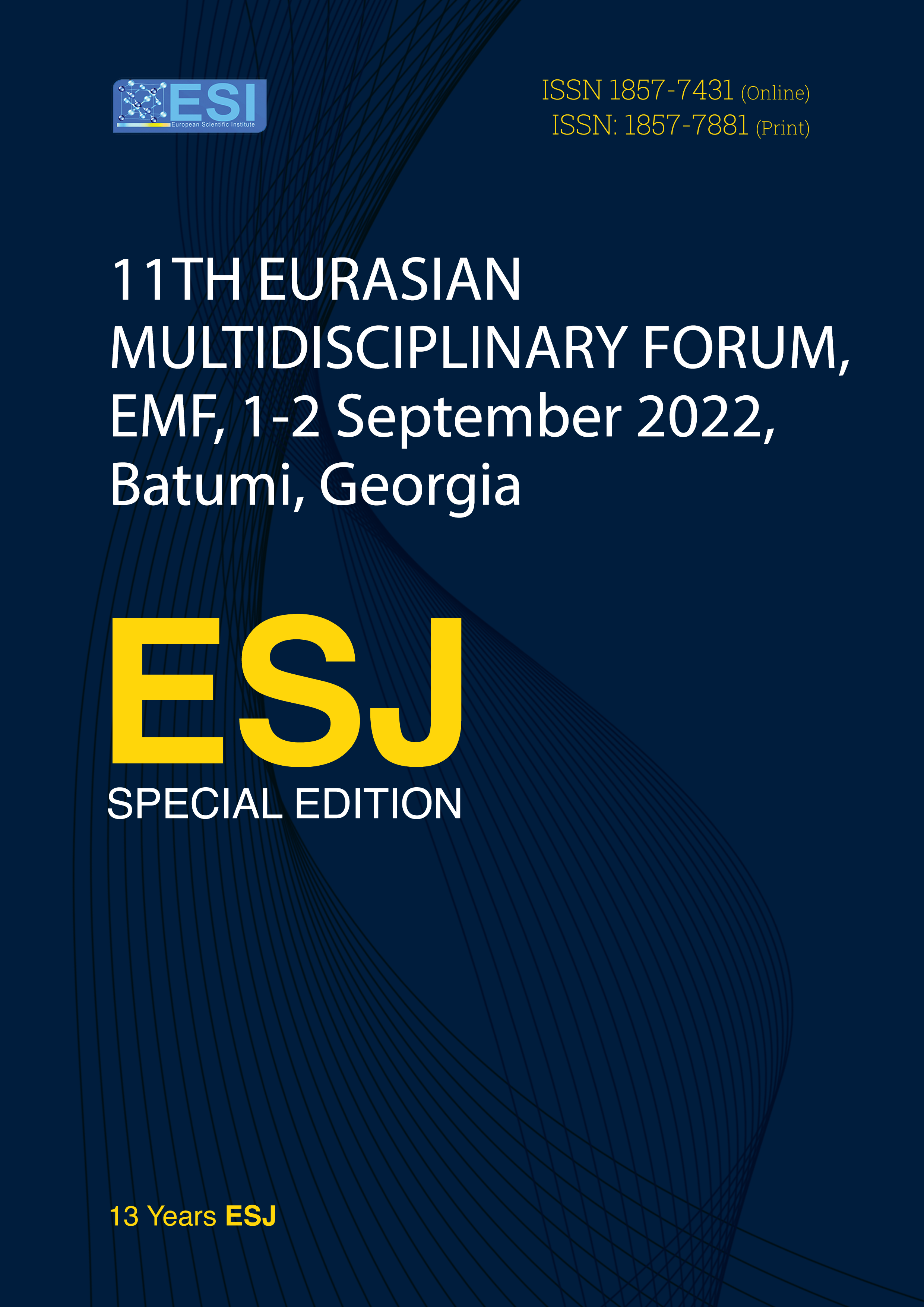The Relationship between Financial Development and Economic Growth in Five Fragile Countries
Abstract
This study aimed to analyze the causality relationship between financial development and economic growth by using the data of the five fragile countries for the period 1980 to 2018. In this direction, the cross-section dependency is examined, and it is concluded that the cross-section is independent. Then, by performing the Delta homogeneity test, it is aimed to understand whether other countries are affected at the same level without a change occurring in any of the countries considered, and heterogeneity has been reached. Subsequently, the unit root test determines that the variables are stationary at different levels. Dumitrescu and Hurlin panel causality test is performed to test the causality relationship. As a result of the test, while it is seen that there is not a relationship between economic growth and financial development index, the examination with control variables confirmed that there is a causality relationship between economic growth and financial development. These results showed that the demand-leading hypothesis is valid in the five fragile countries. Finally, to understand the causality relationship more clearly in the study, the Hatemi-J asymmetric causality test was performed, and it is understood that the causality relationship between financial development and economic growth may differ according to country.
Downloads
Metrics
PlumX Statistics
References
2. Anwar, S. & Nguyen, L. P. (2011). Financial development and economic growth in Vietnam. Journal of Economics and Finance, 35(3), 348-360.
3. Apergis, N., Filippidis, I. & Economidou, C. (2007). Financial deepening and economic growth linkages: a panel data analysis. Review of World Economics, 143(1), 179-198. DOI: 10.1007/s10290-007-0102-3
4. Bist Jagadish P. (2018). Financial development and economic growth: Evidence from a panel of 16 African and non-African low-income countries. Cogent Economics & Finance, 6(1), 1449780, 1-17. DOI: 10.1080/23322039.2018.1449780
5. Bozoklu, Ş. & Yılancı, V. (2013). Finansal Gelişme ve İktisadi Büyüme Arasındaki Nedensellik İlişkisi: Gelişmekte Olan Ekonomiler İçin Analiz. Dokuz Eylül Üniversitesi İktisadi İdari Bilimler Fakültesi Dergisi, 28(2), 161-187.
6. Breusch, T. S. & Pagan, A. R. (1980). The Lagrange multiplier test and its applications to model specification in econometrics. The Review of Economic Studies, 47(1), 239-253.
7. Calderón, C. & Liu, L. (2003). The direction of causality between financial development and economic growth. Journal of Development Economics, 72(1), 321-334.
8. De Hoyos, R. E. & Sarafidis, V. (2006). Testing for cross-sectional dependence in panel-data models. The Stata Journal, 6(4), 482-496.
9. Eita, J. H., & Jordaan, A. C. (2007). A causality analysis between financial development and economic growth for Botswana. University of Pretoria Department of Economics Working Paper Series, Working Paper No: 2007-22
10. Ekpo, N. B. (2016). Informal Capital Markets and Integrated Rural Development in Nigeria. European Scientific Journal, 12(22), 305-323. DOI: 10.19044/esj.2016.v12n22p305
11. Güriş, S. (2018). Uygulamalı Panel Veri Ekonometrisi. İstanbul: Der Yayınları.
12. Hood, M. V., Kidd, Q. & Morris, I. L. (2006). Two sides of the same coin? Employing Granger causality tests in a panel framework. Political Analysis, 16.
13. Im, K. S., Pesaran, M.. H. & Shin, Y. (2003). Testing for unit roots in heterogeneous panels. Journal of Econometrics, 115(1), 53-74.
14. Khan, M. S. & Senhadji, A. S. (2003). Financial development and economic growth: a review and new evidence. Journal of African Economies, 12(2), 1-14.
15. Nyasha, S. & Nicholas M. O. (2019). Do financial systems spur economic growth in the USA? An empirical investigation. Panoeconomicus 66(2), 165-185.
16. Obeidat, Z. M. (2016). Human capital investment and training in Islamic banking industry in Jordan Jordan Islamic Bank for Finance and Investment. European Scientific Journal, 12(10), 90-103. DOI: 10.19044/esj.2016.v12n10p90
17. Ono, S. (2017). Financial development and economic growth nexus in Russia. Russian Journal of Economics, 3(3), 321-332.
18. Pesaran, M.. H. (2015). Testing weak cross-sectional dependence in large panels. Econometric Reviews, 34(6-10), 1089-1117.
19. Pesaran, M..H. (2004). General diagnostic tests for cross-sectional dependence in panels. Empirical Economics, 1-38.
20. Pesaran, M.. H., Ullah, A. & Yamagata, T. (2008). A bias‐adjusted LM test of error cross‐section independence. The Econometrics Journal, 11(1), 105-127.
21. Pesaran, M. H. & Yamagata, T. (2008). Testing slope homogeneity in large panels. Journal of Econometrics, 142(1), 50-93.
22. Samargandi, N., Fidrmuc, J. & Ghosh, S. (2015). Is the relationship between financial development and economic growth monotonic? Evidence from a sample of middle-income countries. World Development, 68, 66-81.
23. Škare M., Sınkovıć, D. & Porada-Rochoń, M. (2019). Fınancıal development and economıc growth ın Poland 1990–2018. Technological and Economic Development of Economy, 25(2), 103-133.
24. Turgut, E. and Uçan, O. (2019). Yolsuzluğun vergi oranları ile olan ilişkisinin OECD ülkeleri örnekleminde incelenmesi. Niğde Ömer Halisdemir Üniversitesi Sosyal Bilimler Enstitüsü Dergisi, 1(3), 1-17.
Copyright (c) 2023 Ecem Turgut, Okyay Ucan

This work is licensed under a Creative Commons Attribution-NonCommercial-NoDerivatives 4.0 International License.








